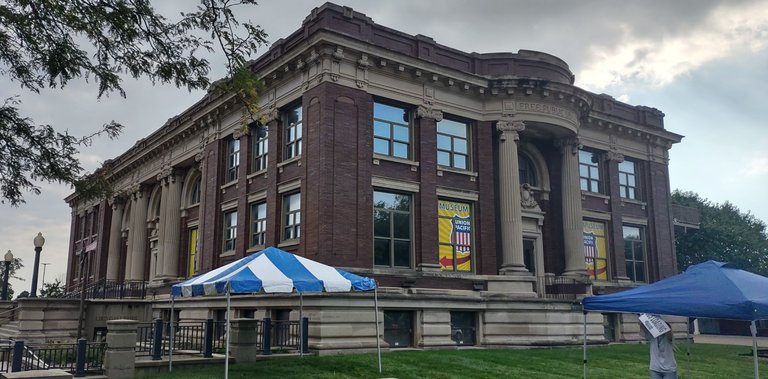
Hello Hivers and Train Lovers. Saturday I took part in an annual event held in Council Bluffs, Iowa (IA). The event is called Railroad Days. This event was held on 23 September from 9:00 a.m. to 5:00 p.m. I was late to the event as I arrived at about 3:00 p.m.
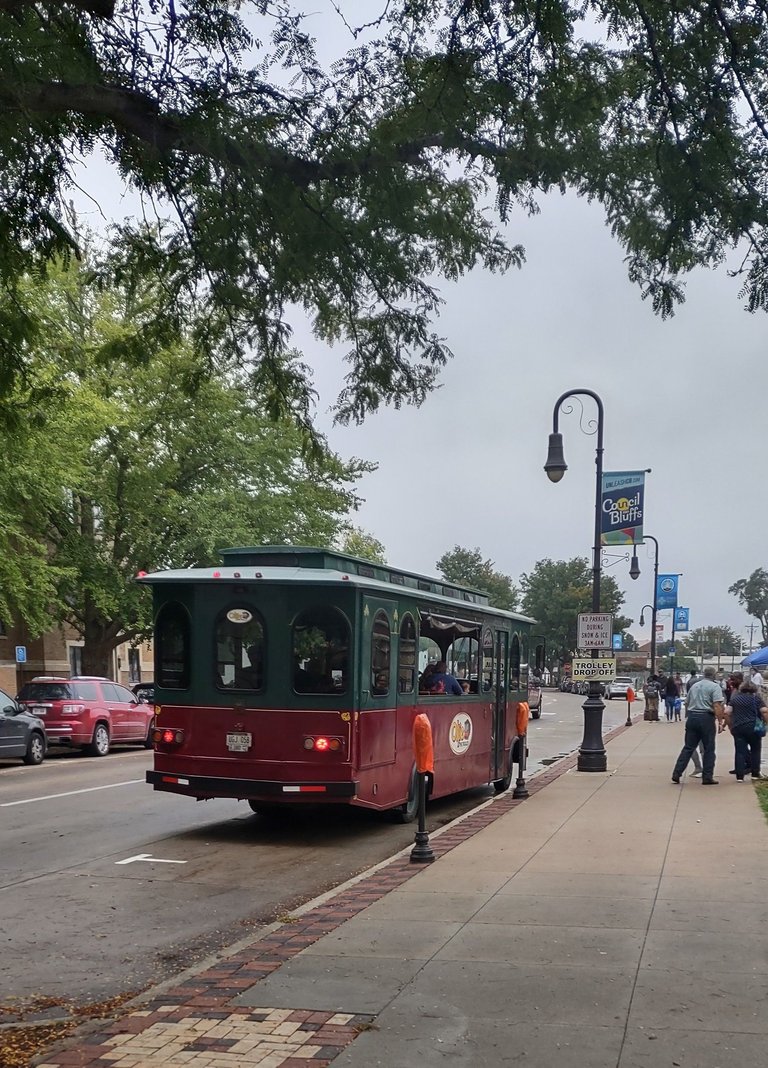
So this event is celebrated at numerous locations throughout Council Bluffs. Locations includes the Union Pacific Railroad Museum, RailsWest Railroad Museum, Baylis Park, the Historic General Dodge House, the Council Bluffs Public Library, the Historic 100 Block of Council Bluffs, Golden Spike Park and a few other places. A great fun event for the family. They had a group cost of only $10.00 for 2 adults and unlimited children. I only had the opportunity to check out the Union Pacific Railroad Museum for $5.00. For $5.00 more I could have seen so much more. Time is something I didn't have Saturday unfortunately. The picture above is Ollie the Trolley which provided free transportation to all locations for those who paid the $10.00.
Well I spent about two hours at the Union Pacific Railroad Museum. I left after I was informed the museum was closing. It was a rainy day here so if I had the opportunity to visit everywhere I would have had to dress accordingly and have an umbrella. I wish it was a weekend thing but it's only for one day.
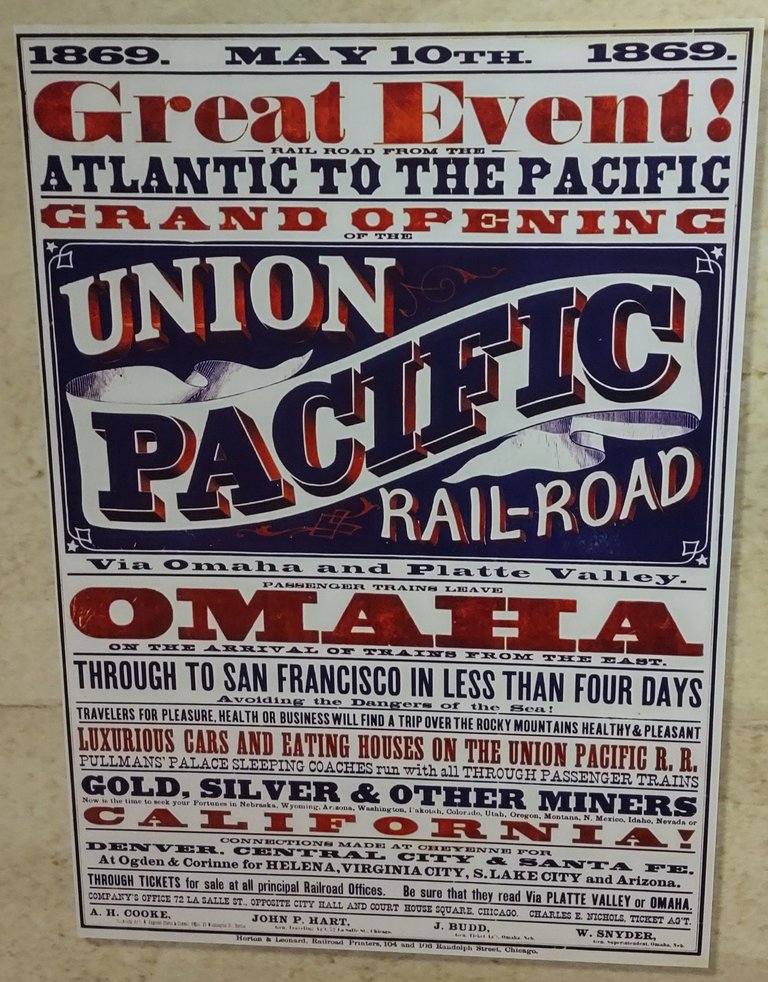
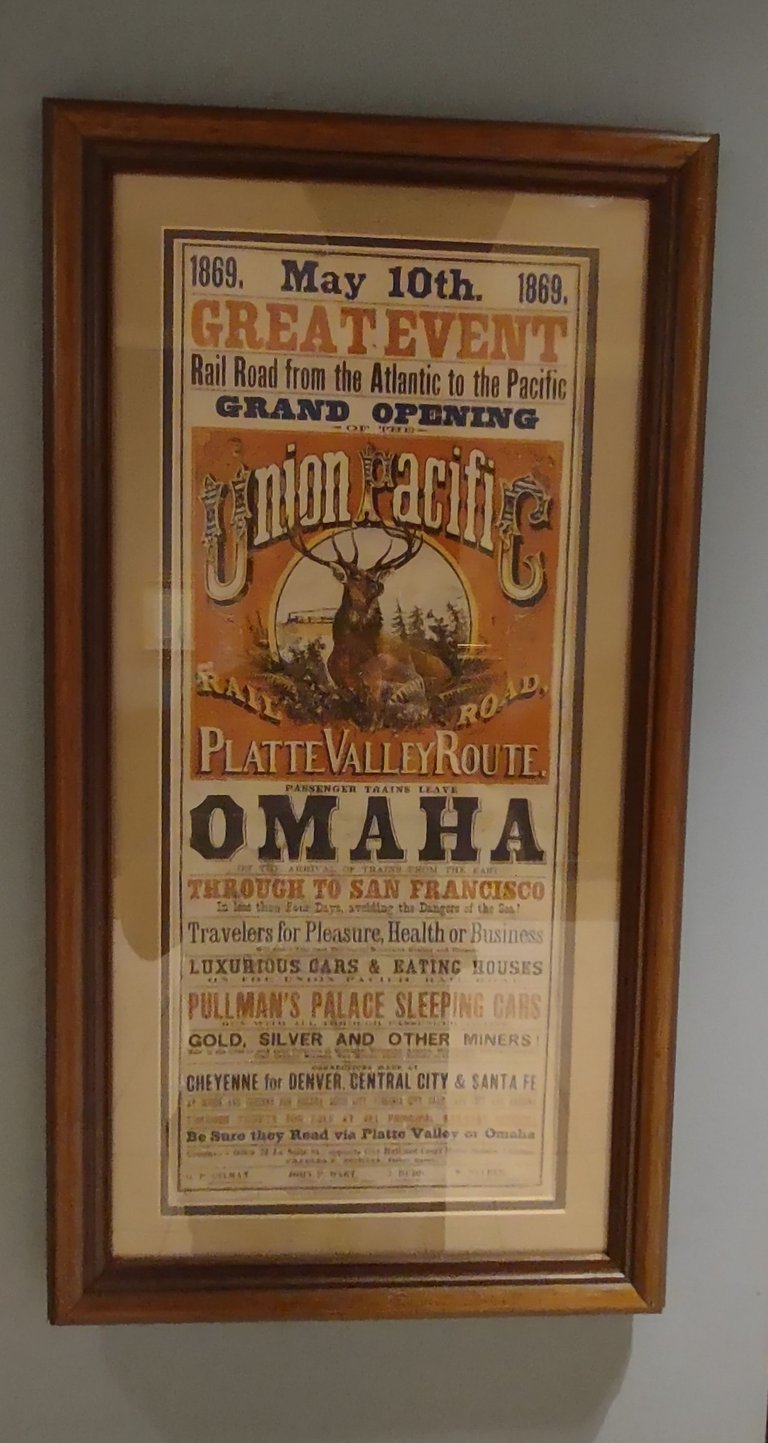
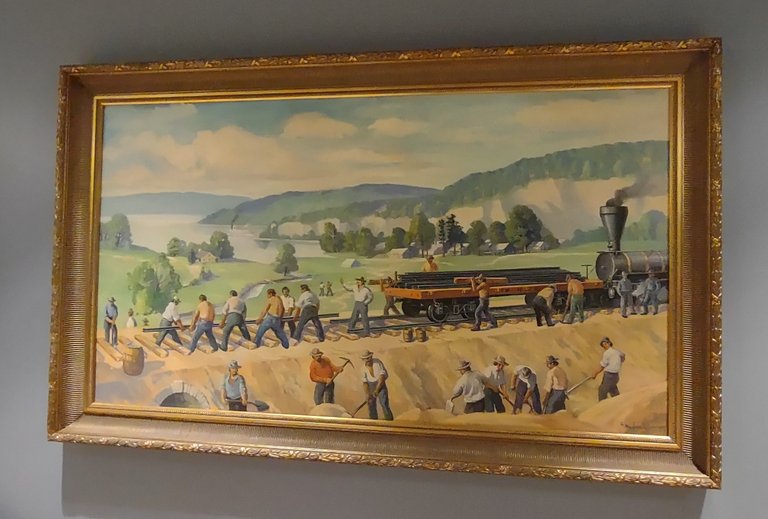
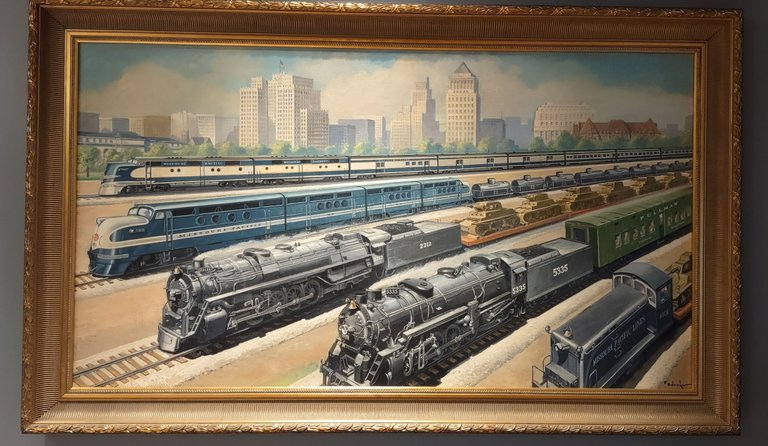
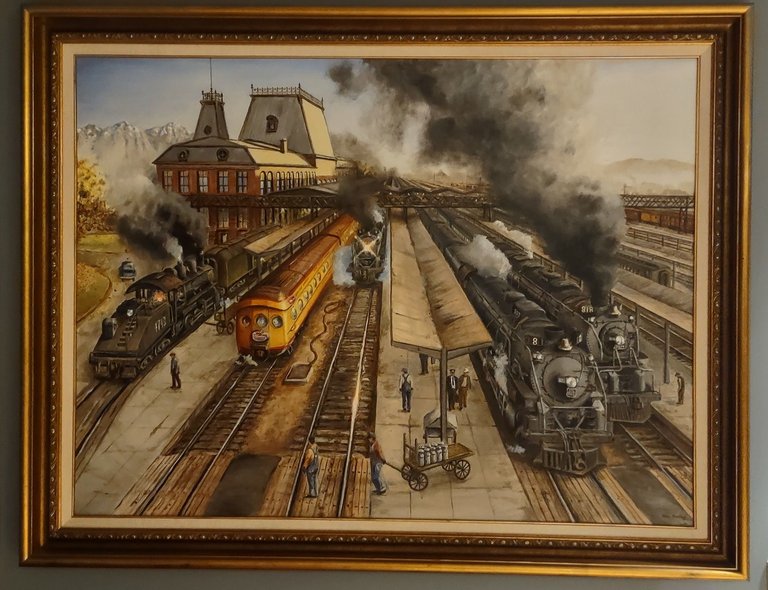
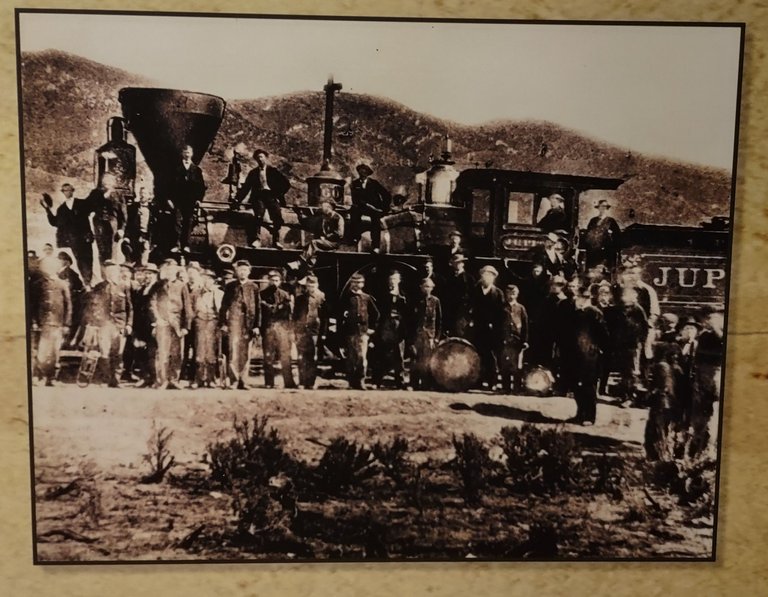
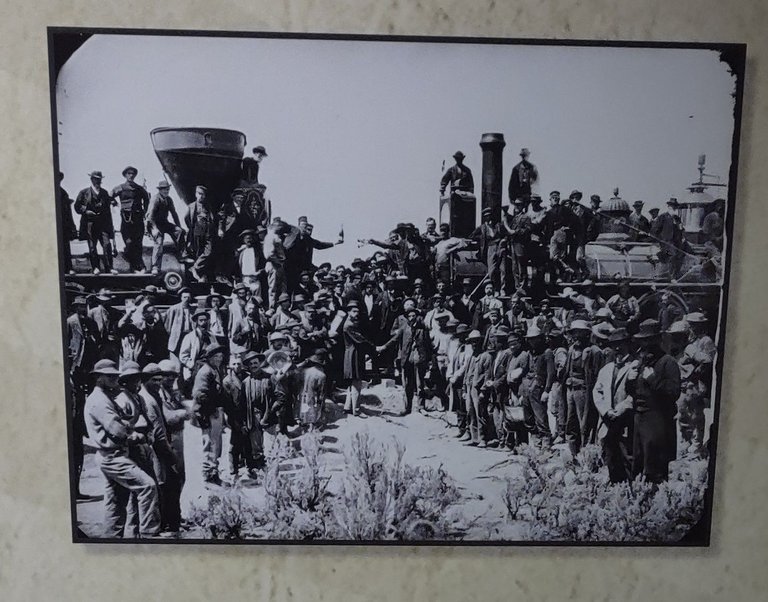
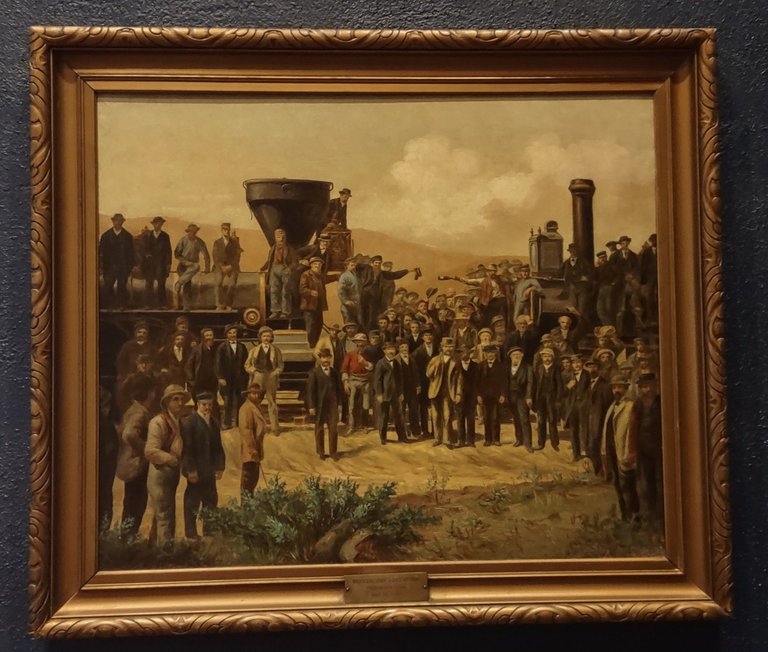
Well off we go on this historic journey of the Union Pacific on the Transcontinental Railroad at mile locator Zero, Council Bluffs, Iowa. The history of the railroad began here when President Abraham Lincoln visited in 1859 to survey the area. It was 1863 when construction began on the Transcontinental Railroad here.
First off the museum use to be Carnegie Library that opened in 1905. It was in 1998 that a new library was opened up nearby to replace it in that capacity. The old library was purchased by Union Pacific Railroad and it opened the doors as a museum on May 10, 2003. The date is significant because May 10 was the day the Transcontinental Railroad was completed in 1869.
One of the first things I seen when entering the museum were these amazing paintings and photographs. I think as art pieces they get bonus points for showing train and railroad history 😁 You can see that the artist probably used old photographs and brought the pictures to life more with the colors on canvas.
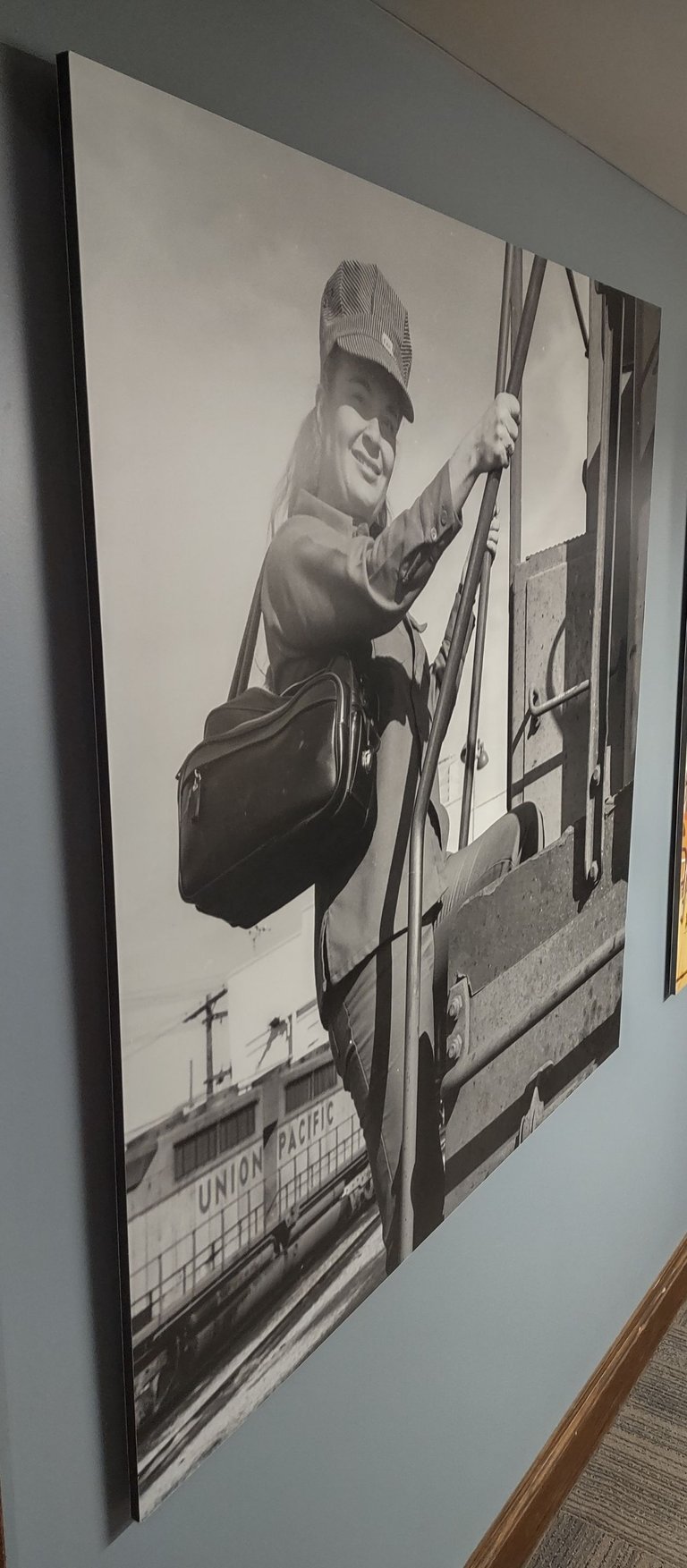
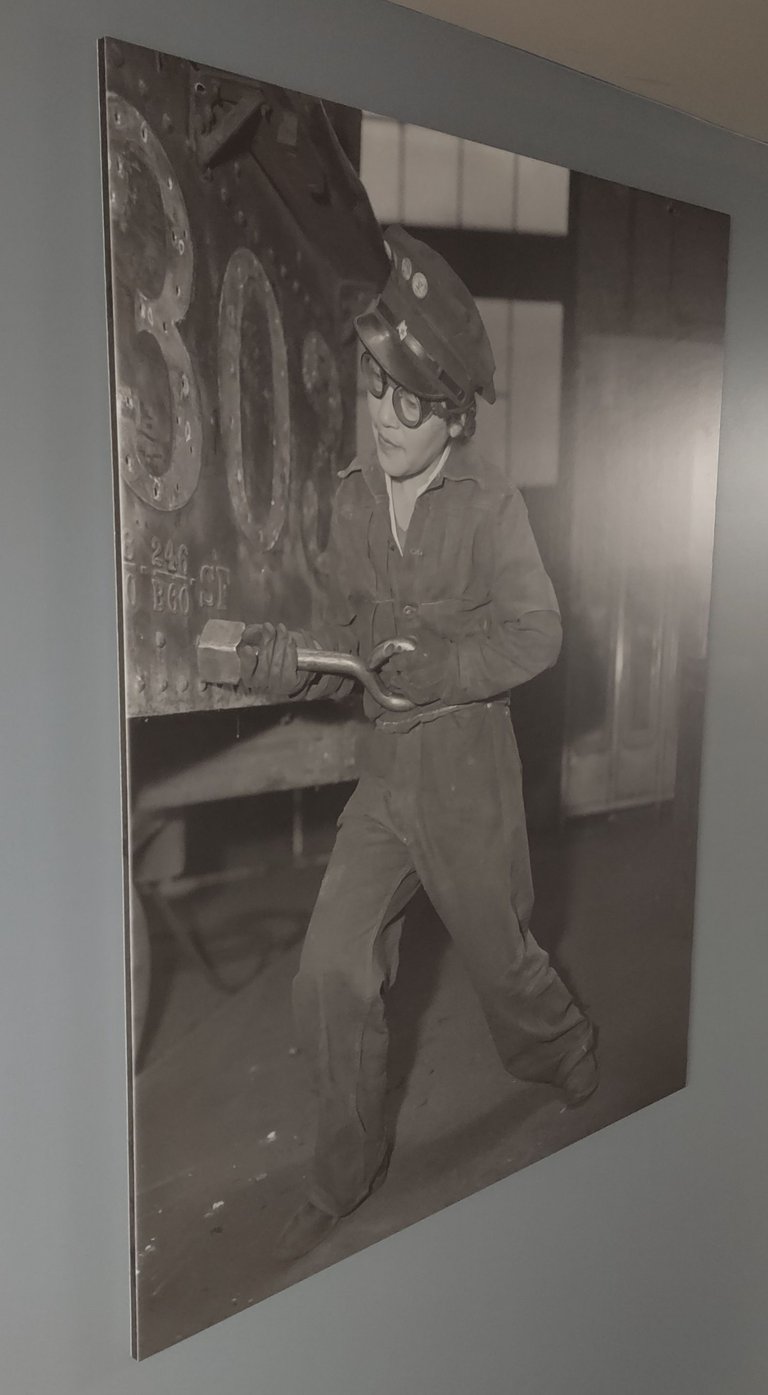
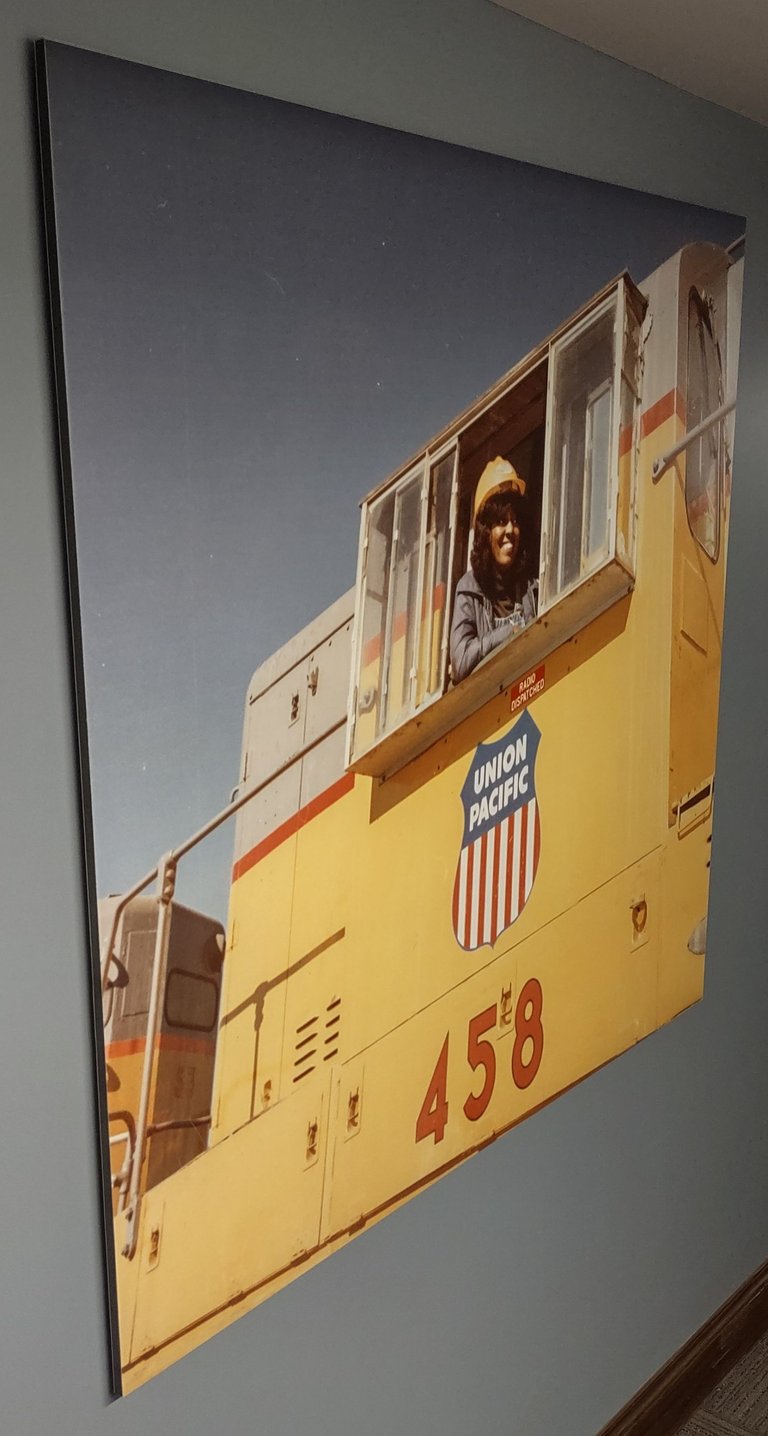
A short small hallway contained these three photos. So small I could only take the pictures from an angle. Though no words and writings were available, it represents that women held and still hold very important jobs in the railroad industry. They were not just passenger stewards!
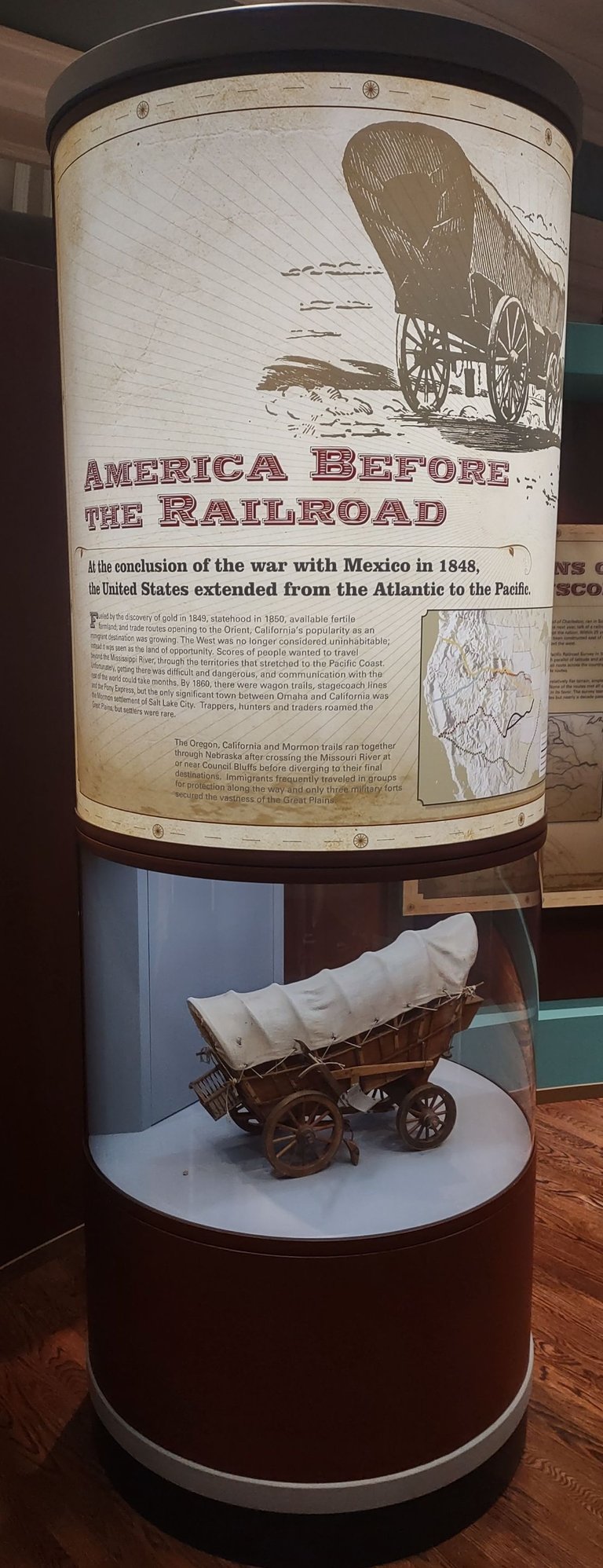
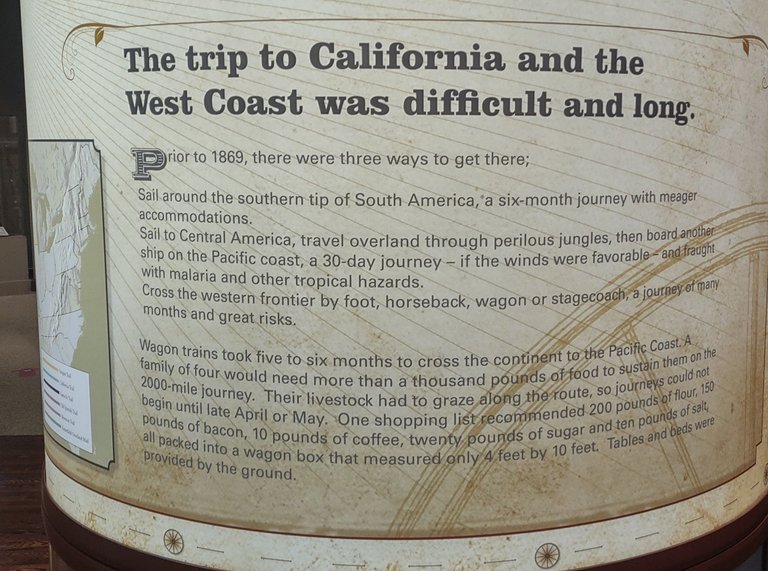
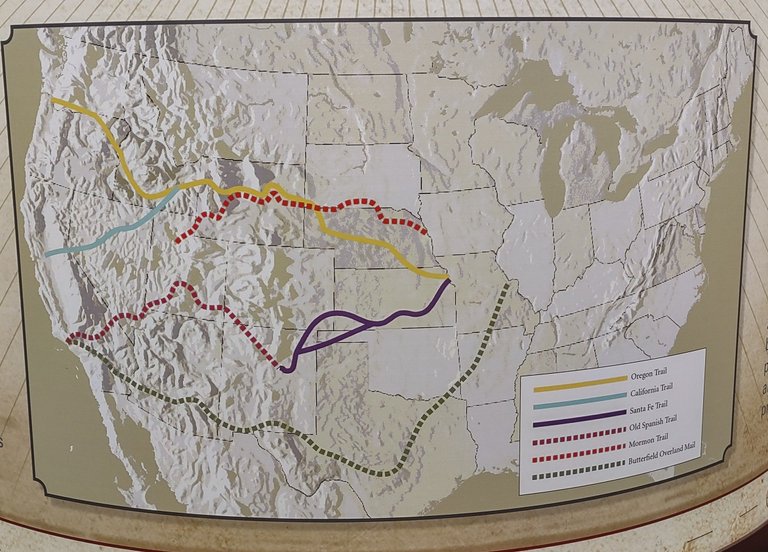
The journey to reach the western United States was a long one before the railways reached those destinations. Only three ways to reach were by land across the country, sail around South America and the combination of sailing/land/sailing. I imagine the land crossing was near where the Panama Canal is located today. Anyways any of the options took awhile and had risks involved.
The wagon and stage coach trails on the map were the routes that many took to get out West. Not far from my house is where the Morman Trail started. Council Bluffs was once a good sized Morman community. Around that time the city was called Kanesville.
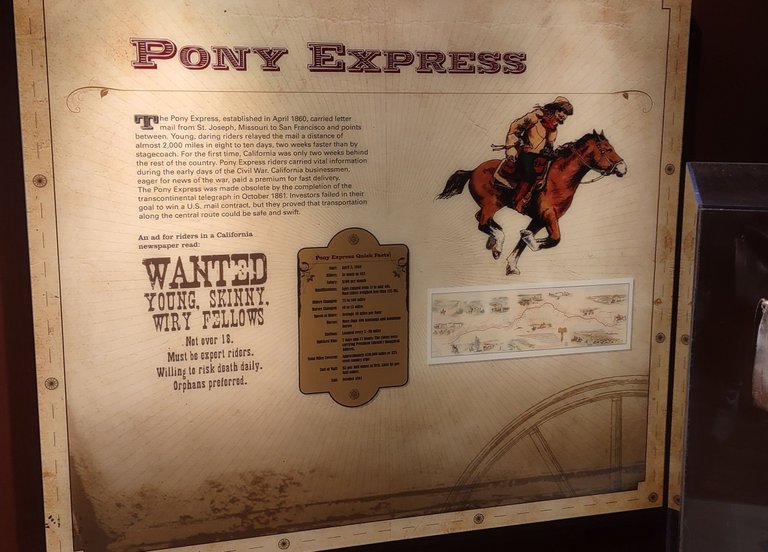
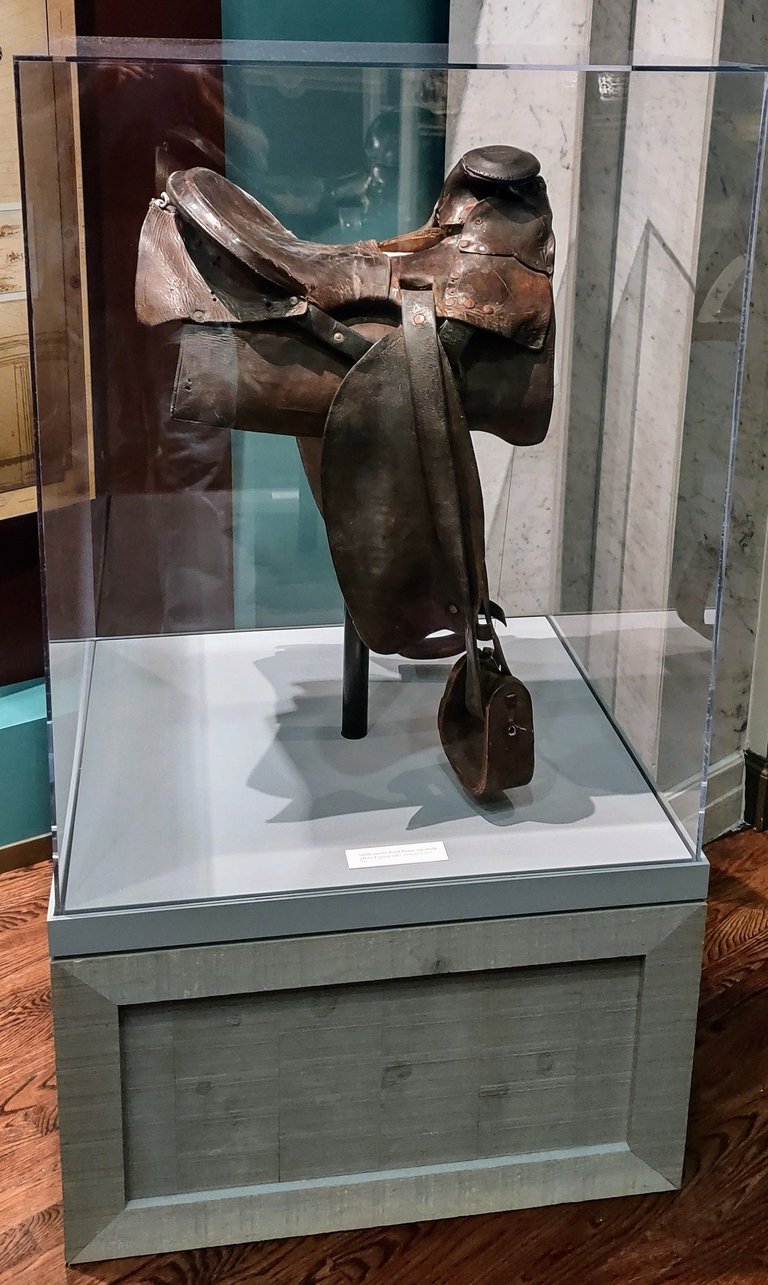
Mail was taken by stage coach prior to the railways. The Pony Express was established in 1860 to ran mail from St. Louis, Missouri to San Francisco, California. This trip would take 7-10 days. Changing riders often and horses every so often. The advertising for it was something that wouldn't be acceptable today. They were looking for oldier boys and young men. Job description is to be an excellent rider, be willing to risk death everyday and orphans preferred. Wow a hash reality to get mail delivered quicker back than. I wonder if the term "Going Postal" came from these early days of delivering mail westward.
The second photo is one of the saddles that would have been equipped on the horses. It was much quicker than stage coach. The installation of the Transcontinental Telegraph in 1861 ended the short stint of the Pony Express moving mail westward.
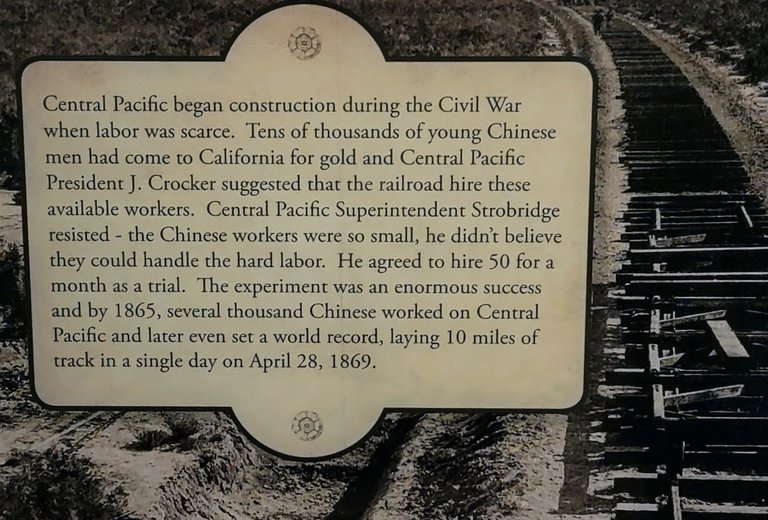
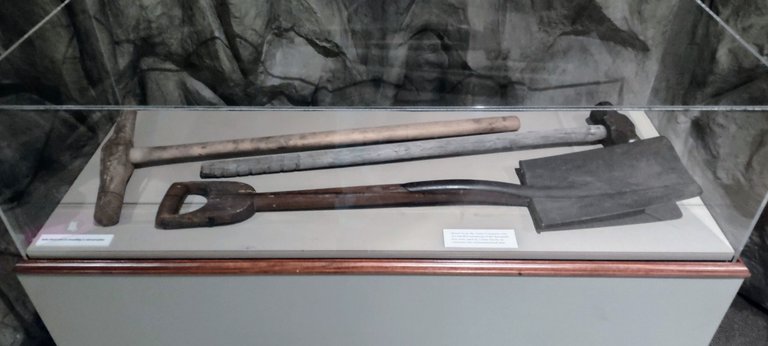

The Chinese were a big part of the labor in the construction of the Transcontinental Railroad. Early on there were those that thought that a man with a smaller statue would not prove worthy with the grueling work. It just shows a person's will and compassion is measurable not ones size when getting a job done. Later on a world record was set on April 28,1869 by laying 10 miles of track in one day, crew made up of mostly Chinese and some Irish. What an amazing feat considering what they had for tools back than.
Two pictures taken were the tools that were used in the construction of the rail ways and some materials that were taken from the old railway. I can't imagine swinging those railroad hammers or shoveling dirt all day long must have been grueling on one's body. It makes you wonder if there were some job rotations of duty. I know moving railroad tines is no fun, they are heavy. The rail sections were have been extremely heavy.
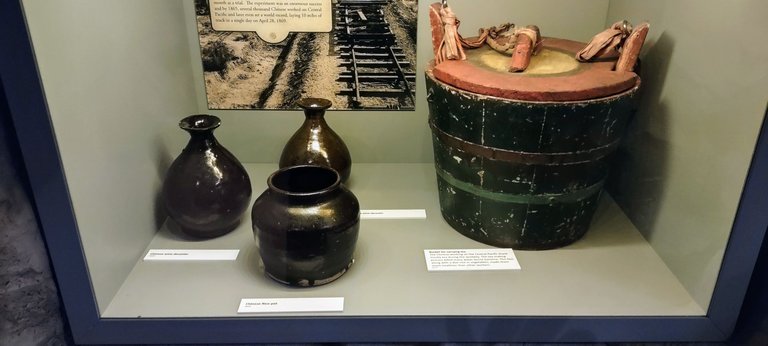
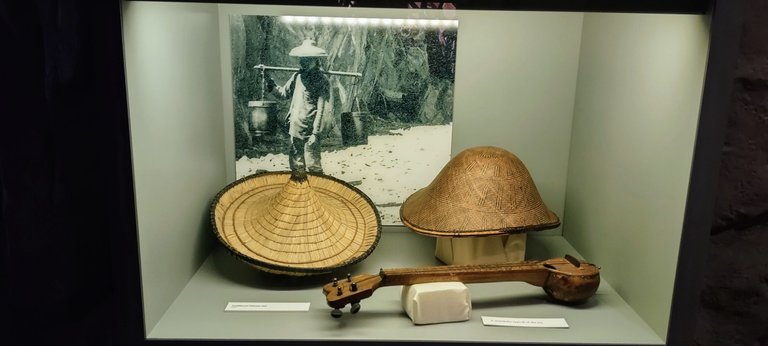
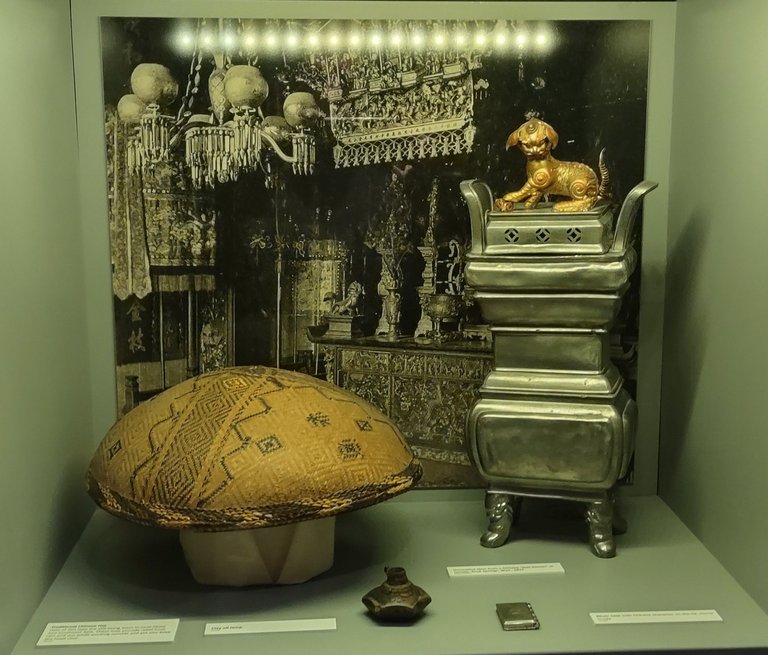
Pictured above are some Chinese artifacts. The first photo contains 3 different items. The bucket on the far right was used for holding tea. On the left up front is a rice pot behind that are two wine canters. I imagine staying hydrated was a must. Maybe the wine to wine down after a hard days work.
Second photo contains some hats that would have been worn at the time. Also in the picture is a time period Chinese mandolin. Maybe during lunch breaks they may have played some after eating.
The third photo we have some more artifacts. This time a different looking hat. Also pictured is a clay lamp and an antique Pewter Altar. I can't recall what the small silver case was. Maybe for cigarettes, sorry I wasn't able to blow it up to read.
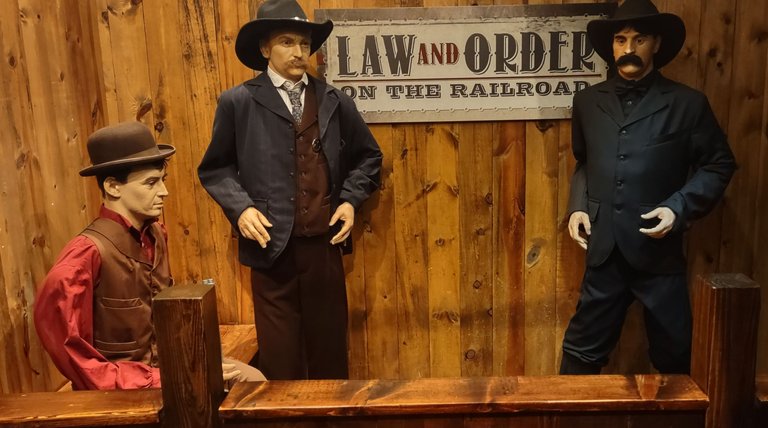
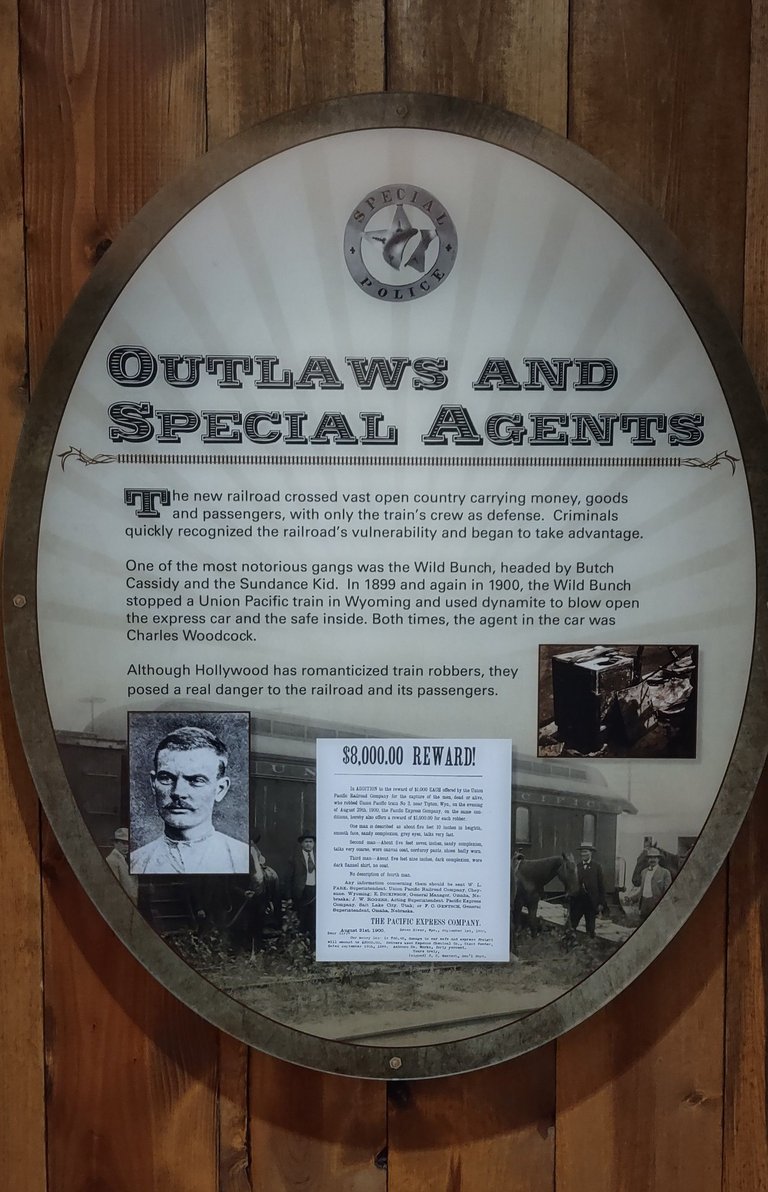
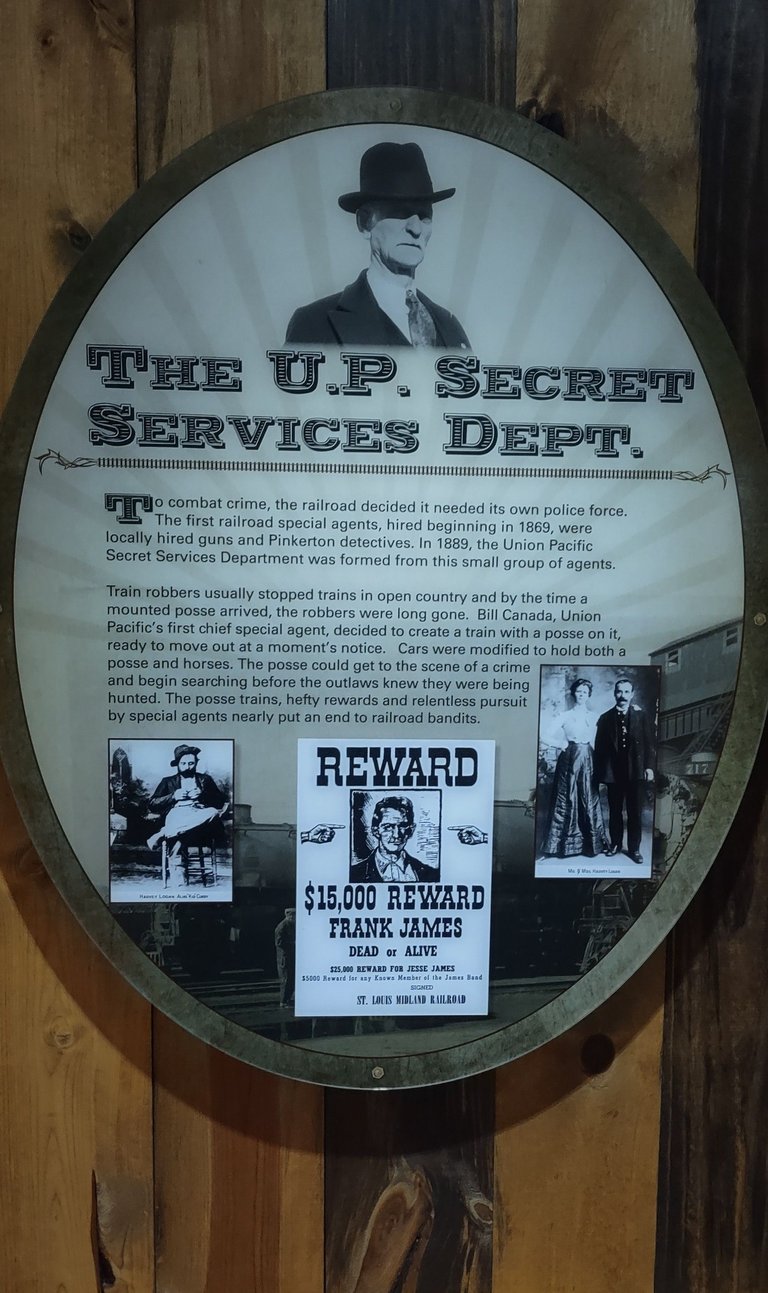
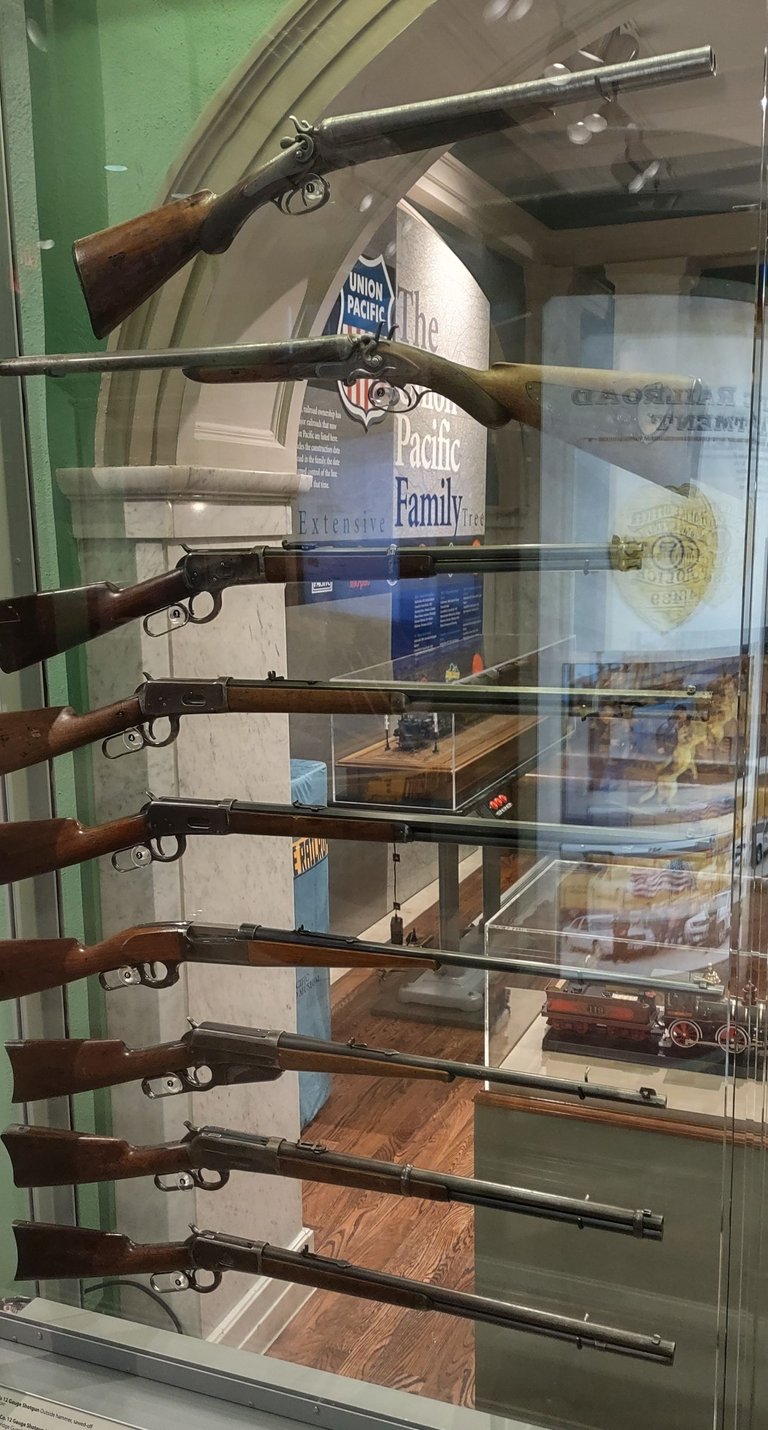
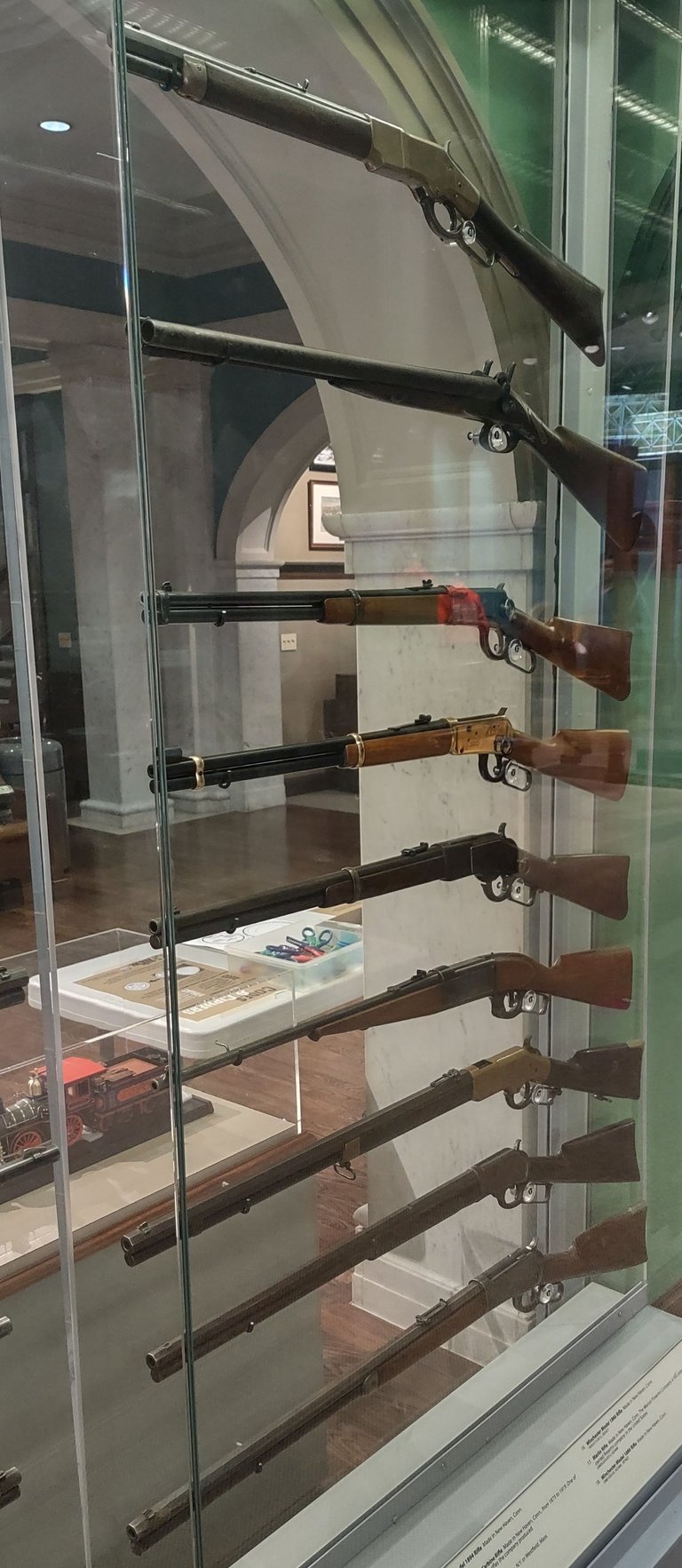
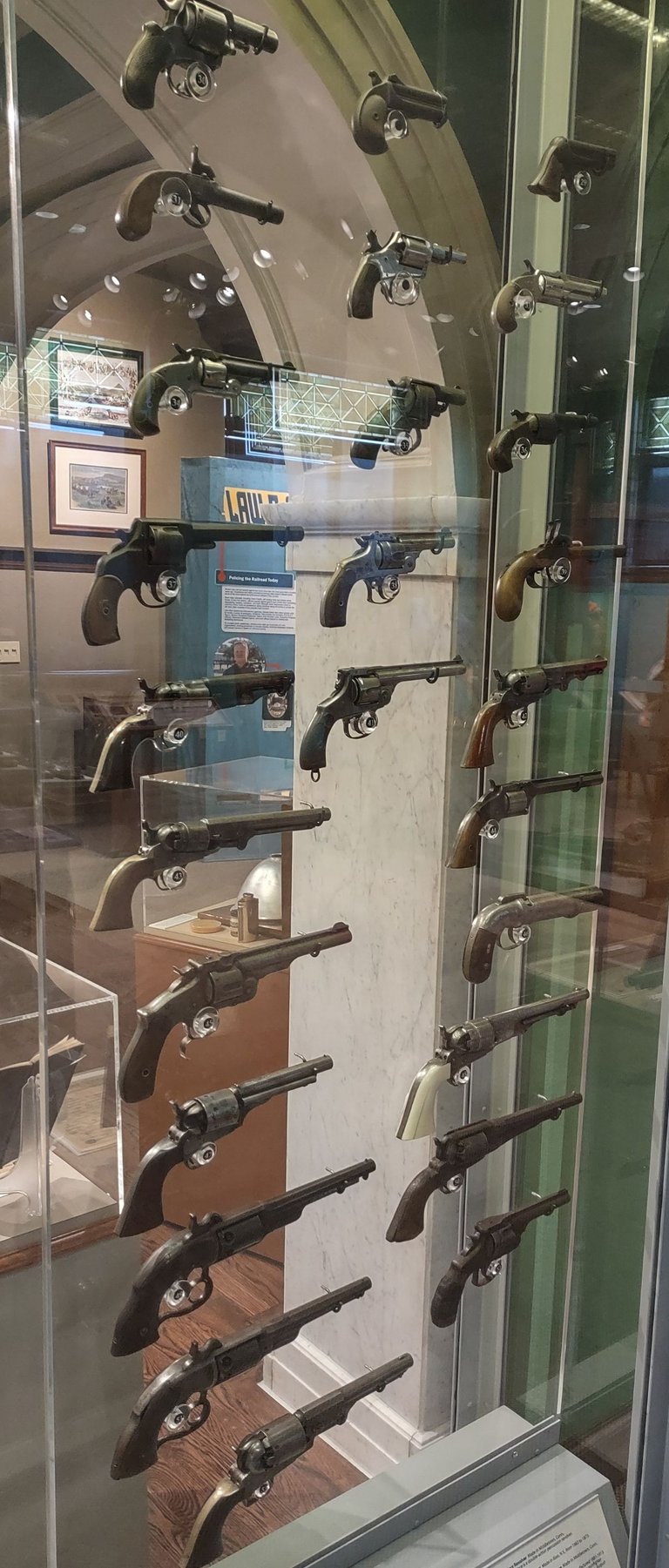
Well railroads carry valuable cargo and because of that the railroads hired it's own criminal defense agents. Even today the railroads companies have there own separate agents.The one thing different about these lawman is they have arresting powers in all states that have railways.
Next we have a large vintage collection of rifles, shot guns, and pistols. These were all in service with Union Pacific. Each one had the Union Pacific logo or were marked simply with UP. Now I think back to those days and don't think it was what Hollywood made out to be. Sure there were train robberies but once the railroad industries had these special agents I think crime on trains decreased.
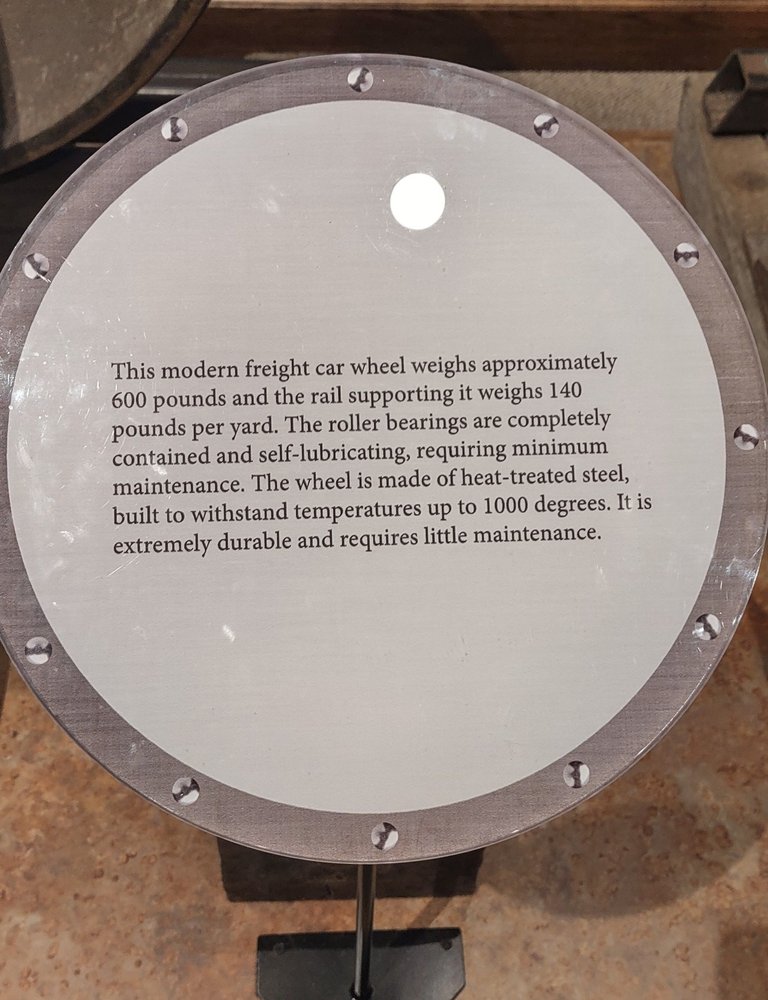
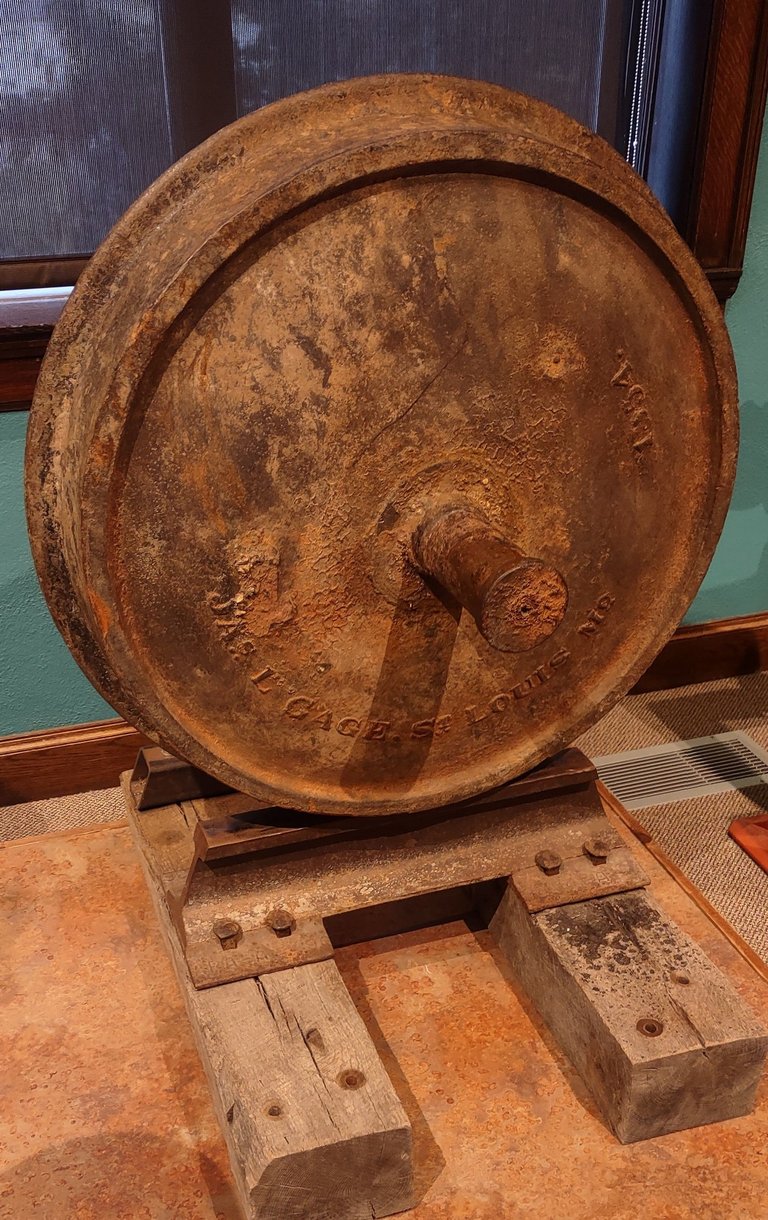
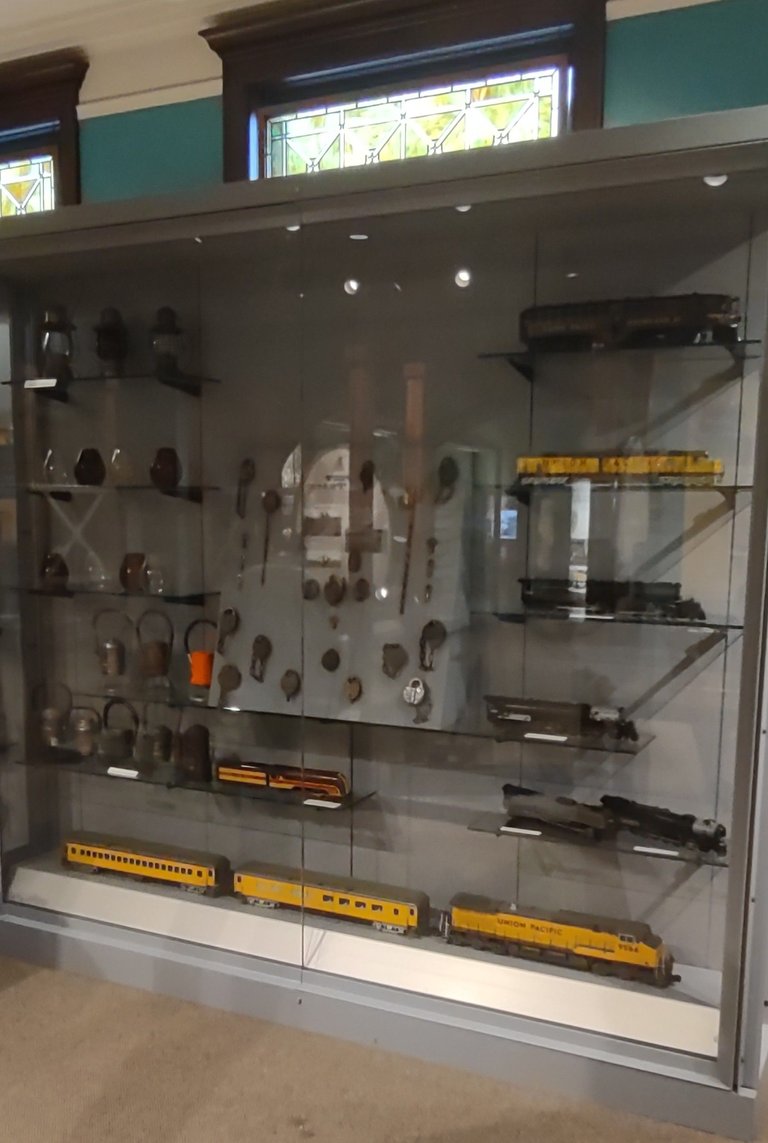
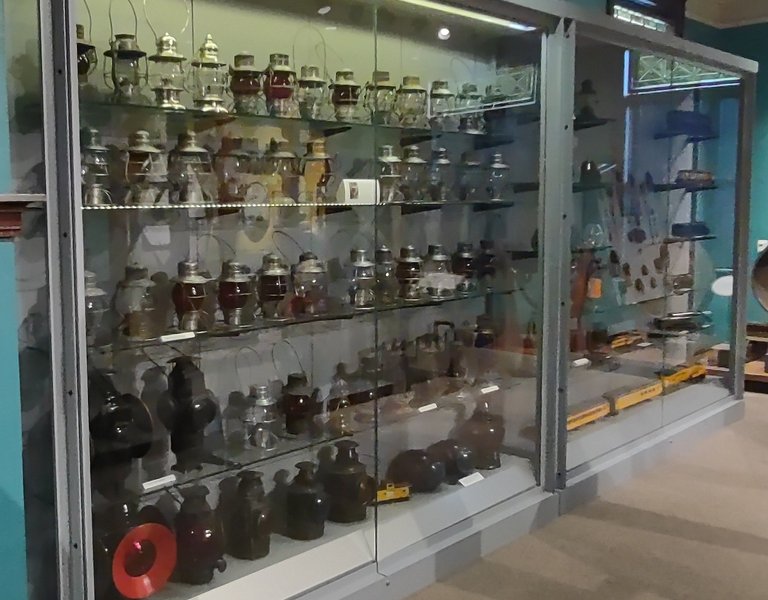
The first picture tells a little bit about the wheels on modern trains. The wheels weigh a lot and the rest of the train weight means it needs a good foot print. I guess heavy and durable means less maintenance which is a good thing.
Next we have model trains followed by some lamps that are great to look at. This was the most train lamps I have ever seen. I spent quite bit of time admiring both the models and lamps but seemed like more time trying to find an angle without a glare, haha.
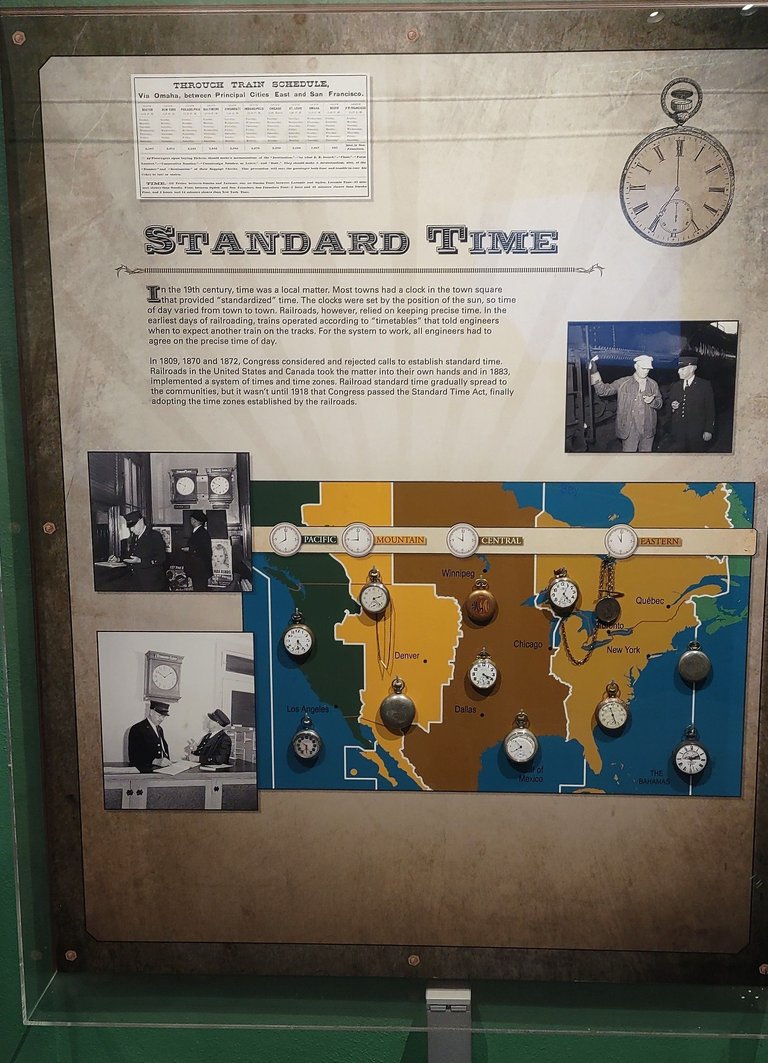
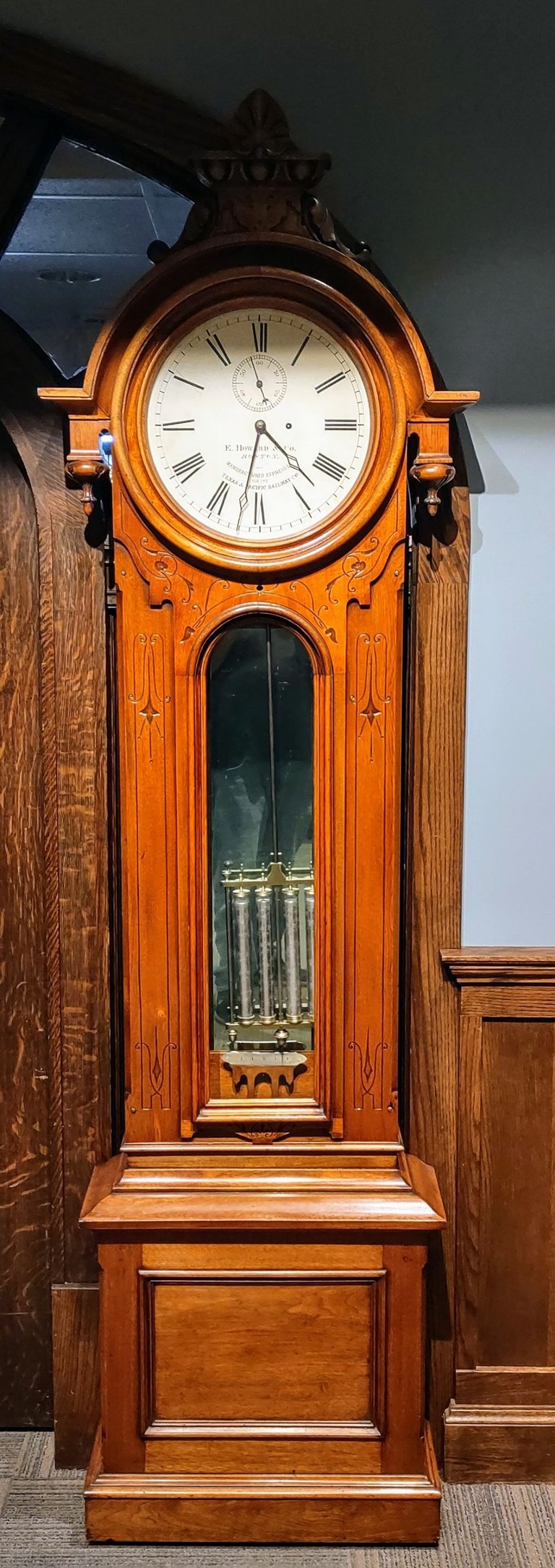
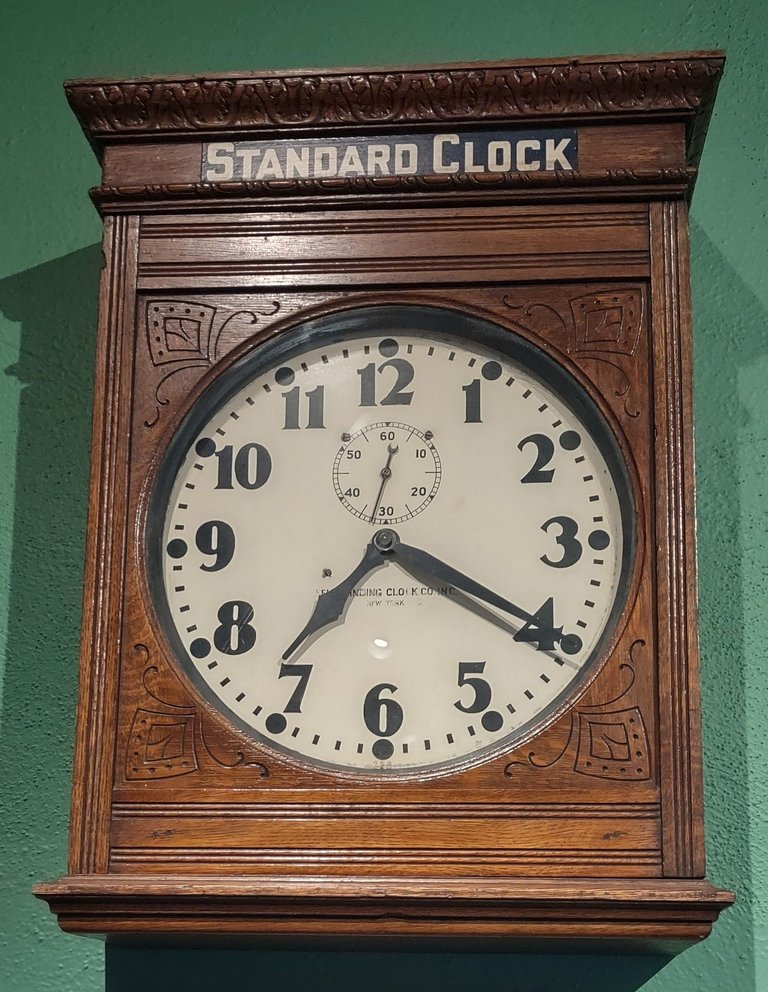
I like going to museums but when they give information that I had no clue on I love it. I can see why the railroad industry needed precise time. With a network of trains on rails in the early days time is critical. You have to know the time table when other trains were on the same track. I didn't realize that standard time was a railroad thing started in 1883. They established the standard times and created time zones. It wasn't until 1918 when congress passed it into law.
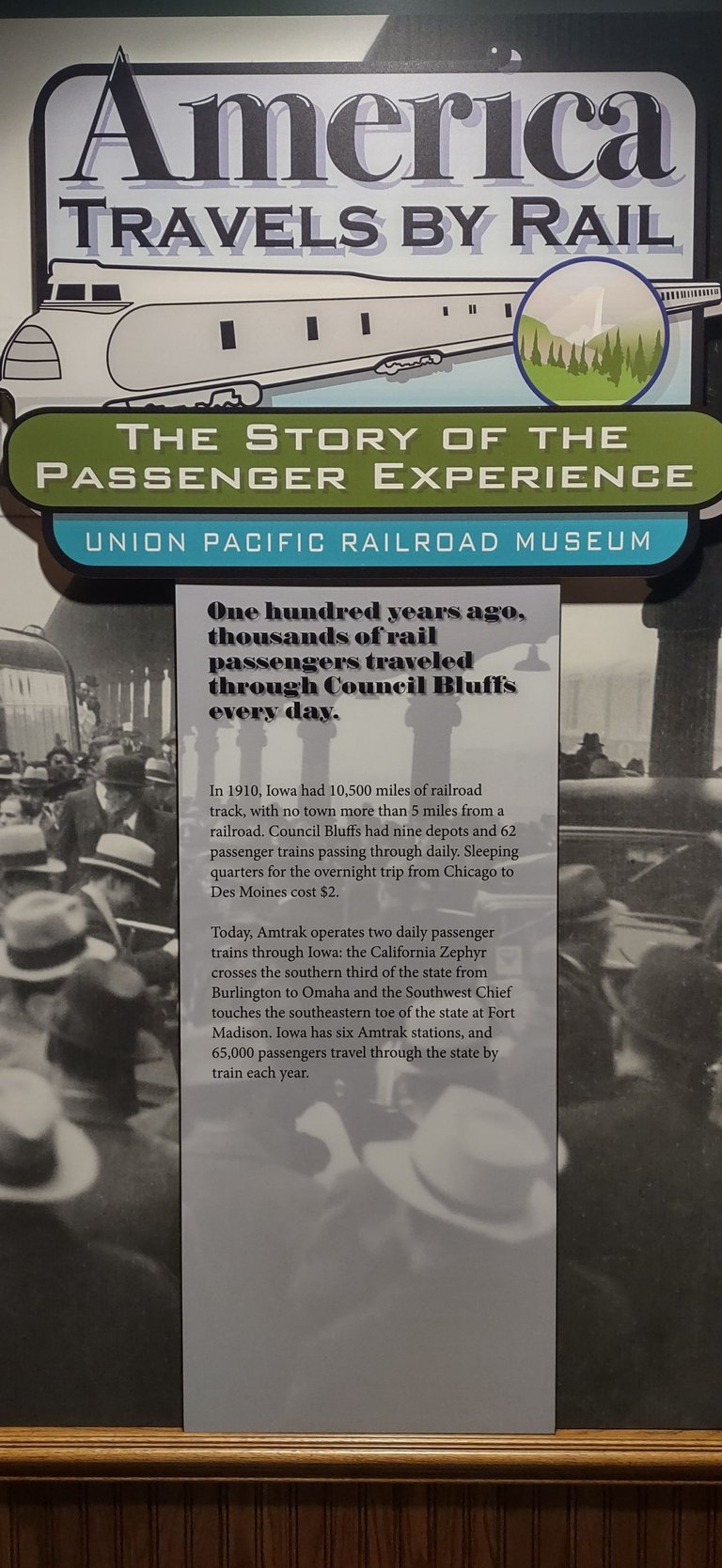
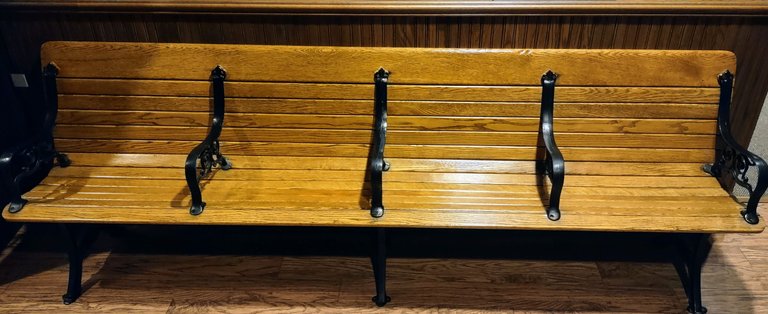
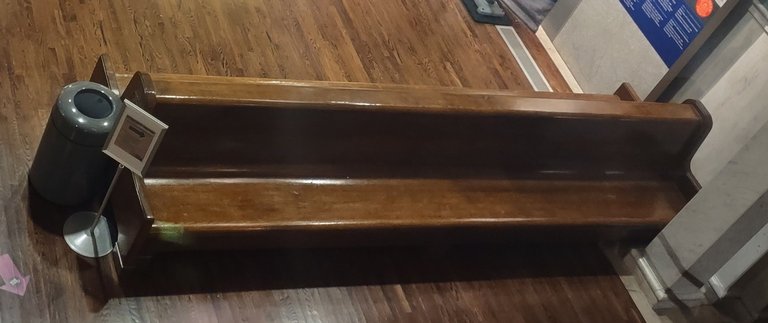
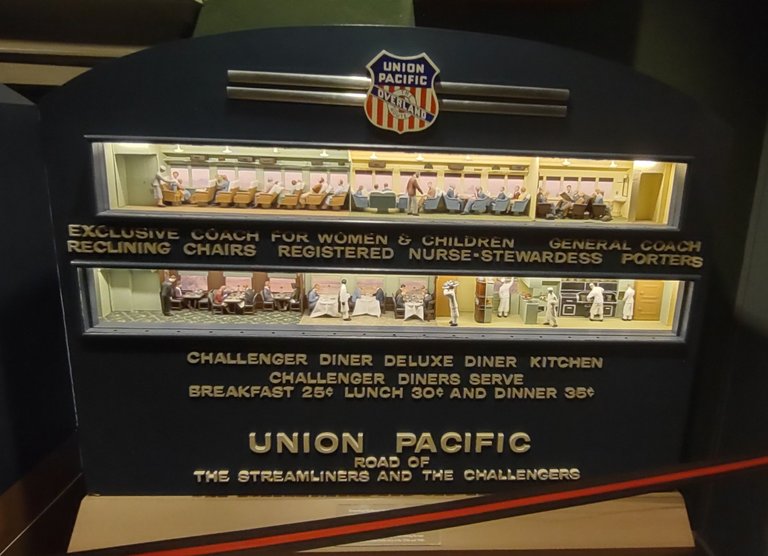
Onward to passenger by rail. It's amazing to think the state of Iowa has 10,500 miles of track in 1910. I had to Google to see what it has today,only 3905 miles of operative rail. I thought it would be quite a bit less when I seen 65,00 passengers travel by train in the state today every year. It was in the past when many Americans traveled by train. The larger cities and many of the coastline cities utilize passenger services offered by Amtrak. It was in 1972 when many railroad companies stopped passenger services. That was when Amtrak became the nations passenger rail service.
It's amazing that Council Bluffs once had 9 train depots and 62 trains that passed through it dailey. Today only one train depot still stands. I'll share about it at a later time.
The next two photo are of benches. These were the style of benches you would have seen in train depots and Union stations of the past.
The last photo is what passenger rail cars would have looked like from the inside. They really look elegant compared to other transportation modes. I would argue they look better back than compared to today's train cars. Well at least in the United States.
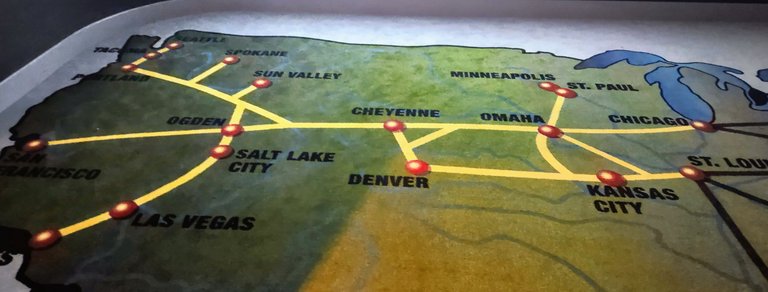
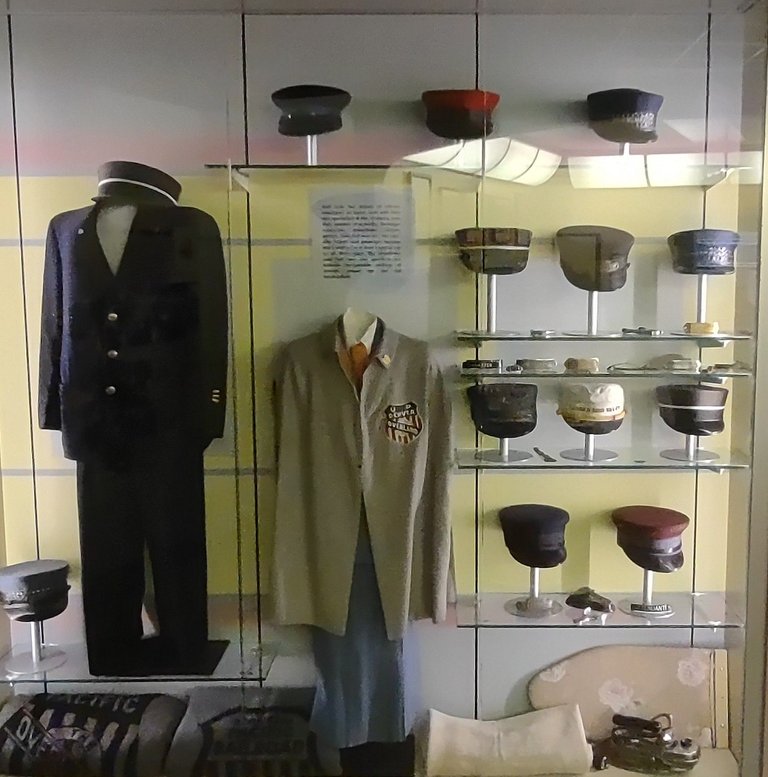
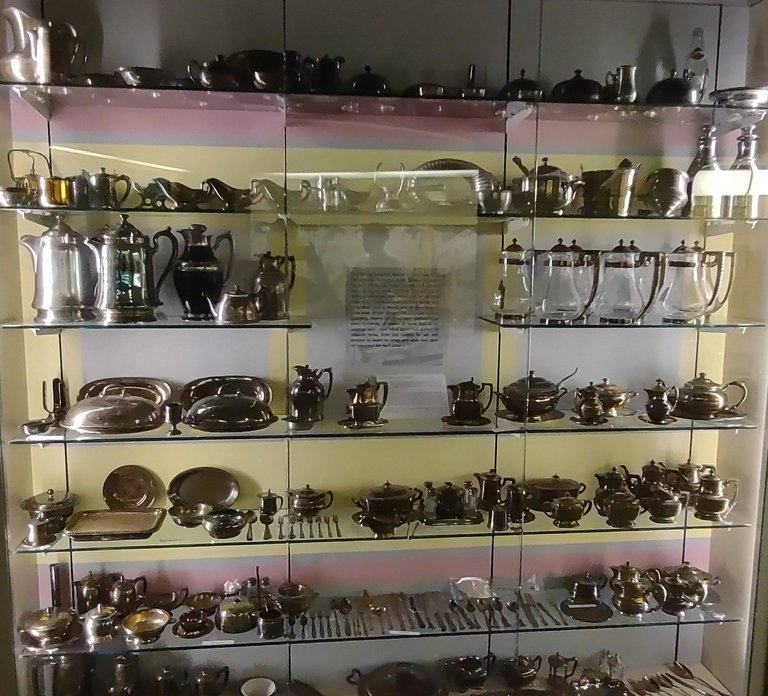
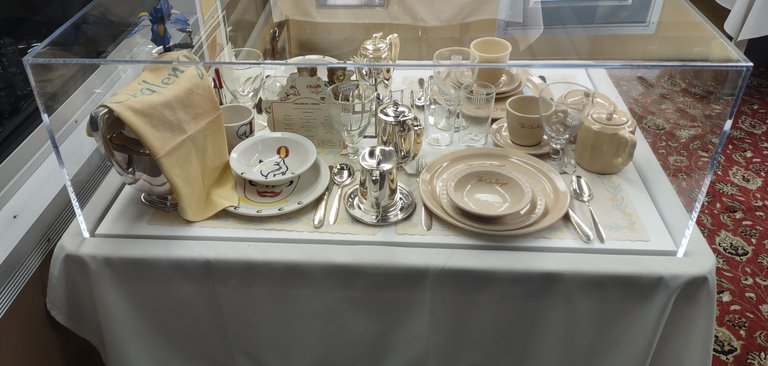
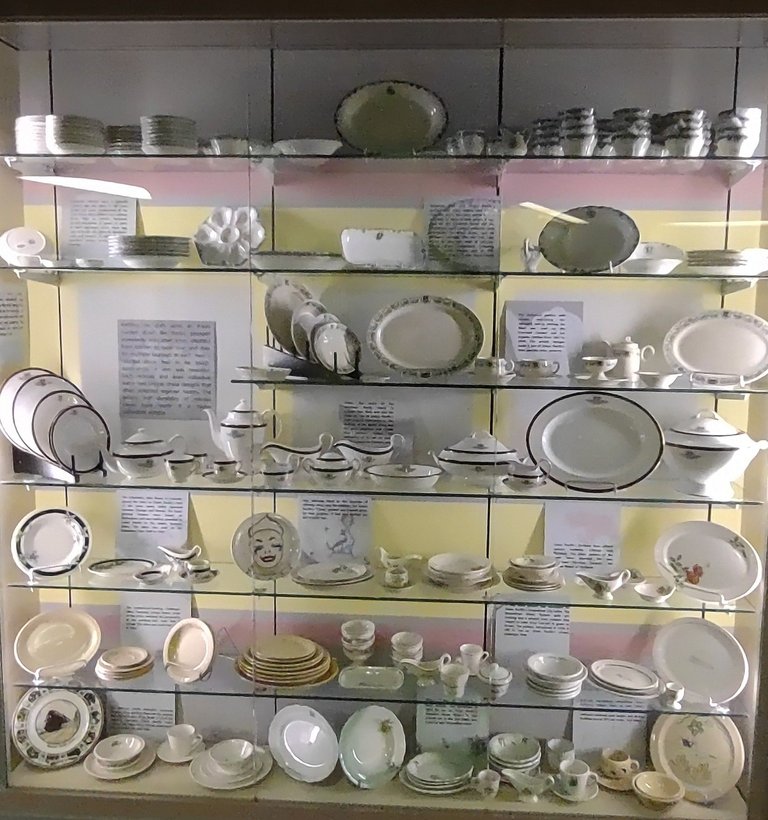
The first photo illustrates the former passenger route. Omaha and Council Bluffs are neighboring cities across the river from one another. If you were coming from the coast on either side of the country it's almost certain you would have passed through here. It just tells a story how important this area was and still is to the railroad.
The second photo shows uniforms of Union Pacific employees who rode along with passengers. The hat color was used to distinguish between numerous jobs aboard the train.
Next few photos are the elegant dinning pieces that Union Pacific used in its dinning cars. They put a lot of effort in making sure there passengers were fed in style. Much better than a bag of nuts or small cup of soda you get on a domestic air flight right?
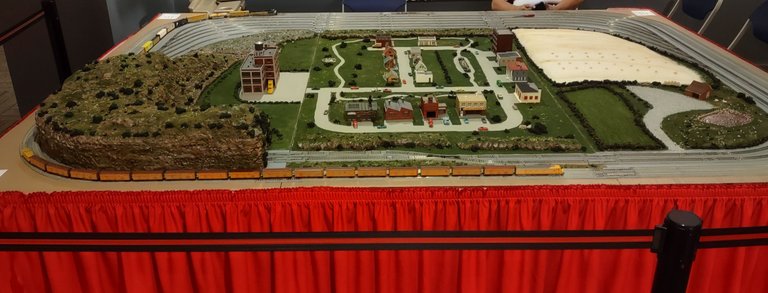

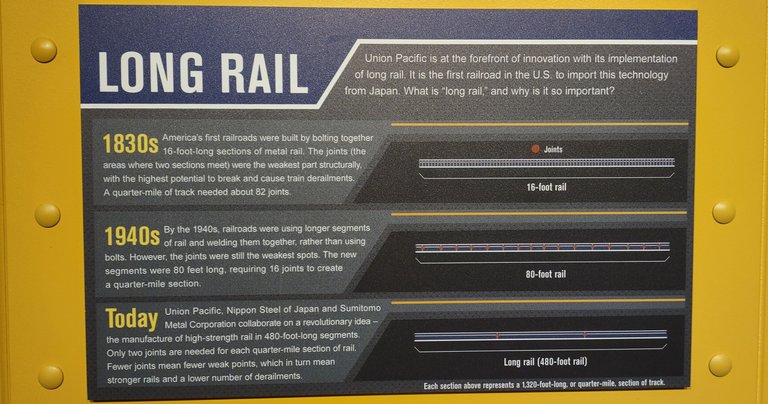

There were plenty of booths set up at the museum due to Railroad Days. From train sets to even a simulator of a modern day diesel train. The simulator was pretty cool to watch I was impressed how the computer functions work. There were other interesting stations as well that kids just loved. From Lego models to even blowing the train's horn.
One of the Lego booths had a 12 year old boy and his mother. The boy had some models displayed. I think they were all models of trains that he had rode on or seen in person. I spent a great deal of time talking to both of them about steam engines. Also got some tips where some cool ones are located at.
There was another booth that had some train engineers and conductors. It would have been nice to talk to them and hear some stories. The booth was busy and there were other things to see before the museum closed so I didn't get to chat with them.
Interesting information about rails and how they have involved throughout the years. The early days of the railroad the rails came in segments of 16 foot, by 1940 they were 80 feet, and today they come in segments of 480 feet. The longer the rails the fewer joints there are which decreases the chances of derailments. It would be a site to see the railroad laying new track today.
The last photo is an illustration of today's diesel locomotives. I was caught on the numbers and comparison to other things. At 400,000 lbs that is equivalent to 33 adult elephants. Horse power(HP) per locomotive is around 4300 Hp. A semi-tractor has about 650 HP. The weight and it's staggering Hp allows these locomotives to reach speeds up to 75 mph. A price tag for one of these locomotives is about 2 million dollars. With that amount one could buy 13 brand new semi-tractors.
I ended up checking out a few more things in the museum. Since I'm getting a bit long on this articles I'll share that in a part II article along with some small ventures I did on Sunday that are also train related.
Thanks for stopping by and getting this far, it's much appreciated. Take care, be safe, and have a great week ahead. Until next time!




